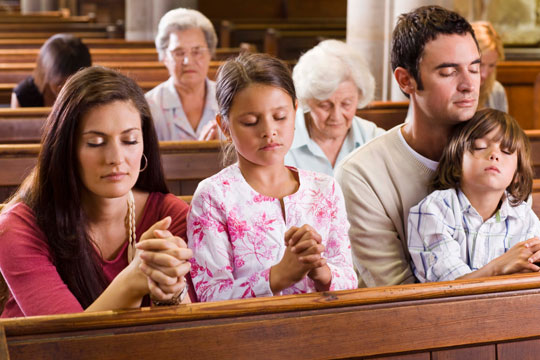
I was teaching a class of second graders the Nicene Creed when I started reciting it phrase by phrase. I asked them to repeat the lines after me. A group of children who attended Mass regularly realized they knew what came next and excitedly continued on without waiting for my prompts. I let them go, curious to see how far they would get. They spoke the words very quickly; whenever they paused or thought about what they were saying, they would lose their place and forget. They knew the words somewhere in the back of their minds, but they had no idea what they were really saying.
How can we teach the Creed to children in a meaningful way? Here are three ways.
Discover
First, begin with the Apostles’ Creed for very young children, since it is more accessible for them. As they learn it, you can gradually add additional concepts from the Nicene Creed.
One of the most effective teaching strategies is to let children discover the lesson themselves. Many children already know everything that is in the Apostles’ Creed without realizing it. Guide them in composing their own creed; then see how it compares with the Apostles’ Creed.
Begin by asking, “If you met someone who had never heard of the Catholic Church before, what would you tell them we believe?” Write responses on the board. You may need to prompt children by asking other questions: Who do we believe created the earth? What do we believe happened to Jesus on Christmas/Easter? Who do we believe was the Mother of Jesus? What do we believe happens when we die?
After most of the topics in the Creed have been covered, present the Creed to the children. As you read each line, have the children point out where you wrote that statement or something similar on the board. They will be impressed to find how much they know.
Illustrate
Have children illustrate each section of the Apostles’ Creed. Provide the words with a space to draw; make a booklet using a different line on each page; or make posters for each line to hang in the hallway. Connecting an image to each statement will help children visualize what the Creed is really about. Here are some examples of how to separate the lines of the Creed and what to draw:
I believe in God, the Father almighty, Creator of heaven and earth—draw the earth, sun, and stars.
And in Jesus Christ, his only Son, our Lord, who was conceived by the Holy Spirit, born of the Virgin Mary—draw a nativity scene with Mary and baby Jesus, and a dove for the Spirit.
Suffered under Pontius Pilate, was crucified, died and was buried—draw Jesus on the cross.
He descended into hell; on the third day he rose again from the dead—draw a risen Jesus and empty tomb.
He ascended into heaven and is seated at the right hand of God the Father almighty; from there he will come to judge the living and the dead—draw Jesus’ feet sticking out of a cloud as he ascends to heaven.
I believe in the Holy Spirit, the holy catholic Church, the communion of saints—draw a church with lots of people, and again a dove for the Spirit.
The forgiveness of sins, the resurrection of the body, and life everlasting. Amen.—draw happy faces and hearts.
Review
Since the Creed is a summary of our beliefs, use the Apostles’ Creed as a summary for your class. One option is to teach the Creed at the beginning of the year, and after each lesson have the students point out how that lesson relates to the Creed. For example, sacraments relate to “the holy catholic Church;” Advent relates to “born of the Virgin Mary.”
Alternatively, you can use the Creed as a review at the end of the year. Guide the children to think about everything they have learned over the year. (Use the table of contents in their textbooks to help.) Then present the Creed, and have the children show how everything they learned relates to the Creed.
How do you teach the Apostles’ Creed to young children?




Thank you so much for putting resources online for us to use.
God Bless!
Thank you, it well help us a lot to educate young christians
You’re welcome, Arlynda!
OUR CLASS WANTS TO KNOW WHY JESUS DESCENDED TO HELL/
Hi Connie and thanks for your question. Many adults want to know why as well! This reference, of course, is to the Apostles’ Creed. We need to know, however, that this is not some form of punishment for Jesus. “Hell” in this instance, is to be understood as the abode of the dead…not the place for those condemned but for all those who died while waiting for a Savior. Jesus’ “descent into hell” is to “free” them and lead them into heaven too enjoy eternal life which is now made possible by Jesus’ death and Resurrection. I hope this is helpful.
This is great, I really enjoyed while going through the explaination of the apostle creed
Thank you for the practical method for teaching Apostole Creed to the young children